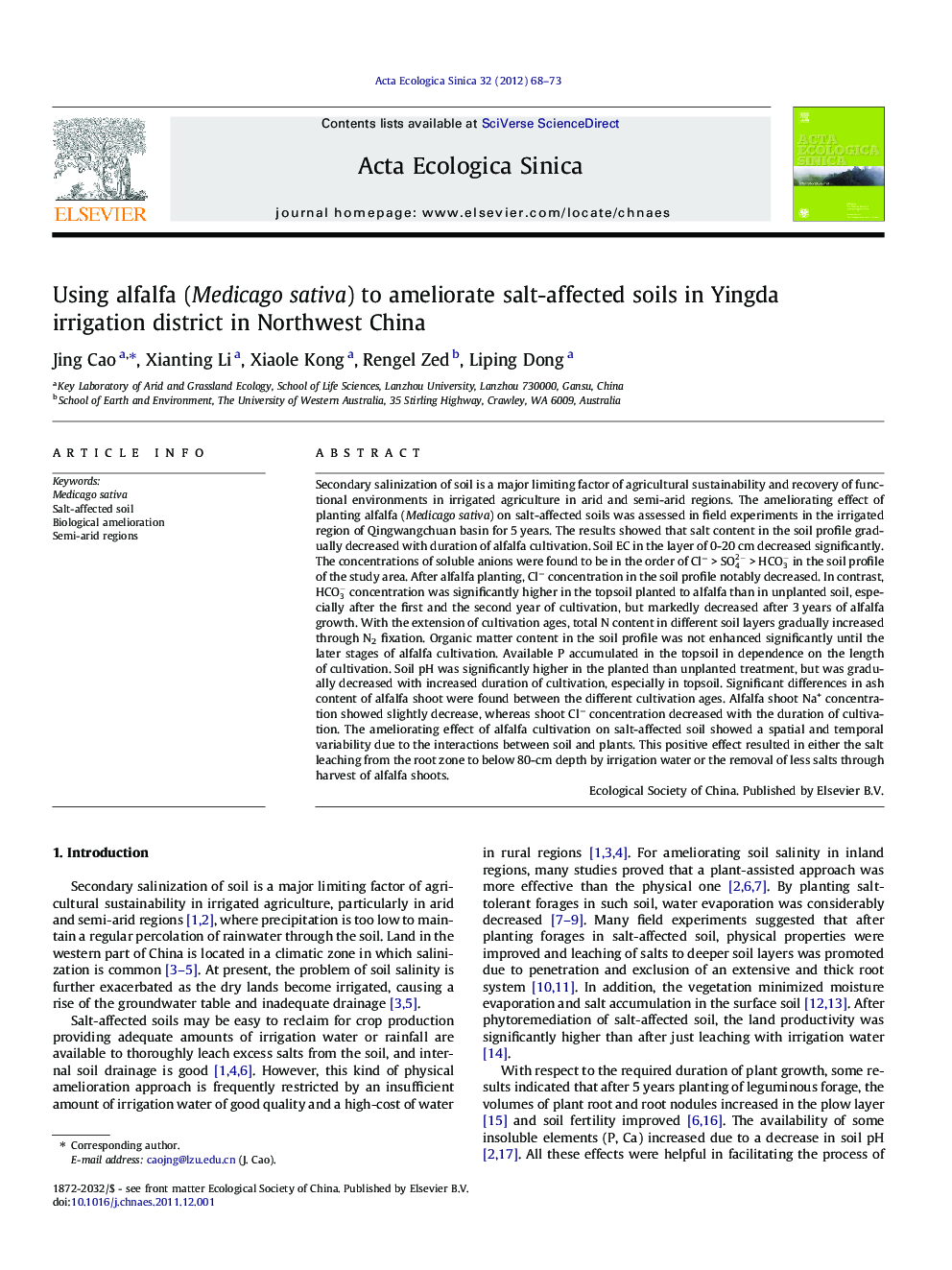| Article ID | Journal | Published Year | Pages | File Type |
|---|---|---|---|---|
| 4379997 | Acta Ecologica Sinica | 2012 | 6 Pages |
Abstract
Secondary salinization of soil is a major limiting factor of agricultural sustainability and recovery of functional environments in irrigated agriculture in arid and semi-arid regions. The ameliorating effect of planting alfalfa (Medicago sativa) on salt-affected soils was assessed in field experiments in the irrigated region of Qingwangchuan basin for 5 years. The results showed that salt content in the soil profile gradually decreased with duration of alfalfa cultivation. Soil EC in the layer of 0-20 cm decreased significantly. The concentrations of soluble anions were found to be in the order of Clâ > SO42- > HCO3- in the soil profile of the study area. After alfalfa planting, Clâ concentration in the soil profile notably decreased. In contrast, HCO3- concentration was significantly higher in the topsoil planted to alfalfa than in unplanted soil, especially after the first and the second year of cultivation, but markedly decreased after 3 years of alfalfa growth. With the extension of cultivation ages, total N content in different soil layers gradually increased through N2 fixation. Organic matter content in the soil profile was not enhanced significantly until the later stages of alfalfa cultivation. Available P accumulated in the topsoil in dependence on the length of cultivation. Soil pH was significantly higher in the planted than unplanted treatment, but was gradually decreased with increased duration of cultivation, especially in topsoil. Significant differences in ash content of alfalfa shoot were found between the different cultivation ages. Alfalfa shoot Na+ concentration showed slightly decrease, whereas shoot Clâ concentration decreased with the duration of cultivation. The ameliorating effect of alfalfa cultivation on salt-affected soil showed a spatial and temporal variability due to the interactions between soil and plants. This positive effect resulted in either the salt leaching from the root zone to below 80-cm depth by irrigation water or the removal of less salts through harvest of alfalfa shoots.
Related Topics
Life Sciences
Agricultural and Biological Sciences
Ecology, Evolution, Behavior and Systematics
Authors
Jing Cao, Xianting Li, Xiaole Kong, Rengel Zed, Liping Dong,
